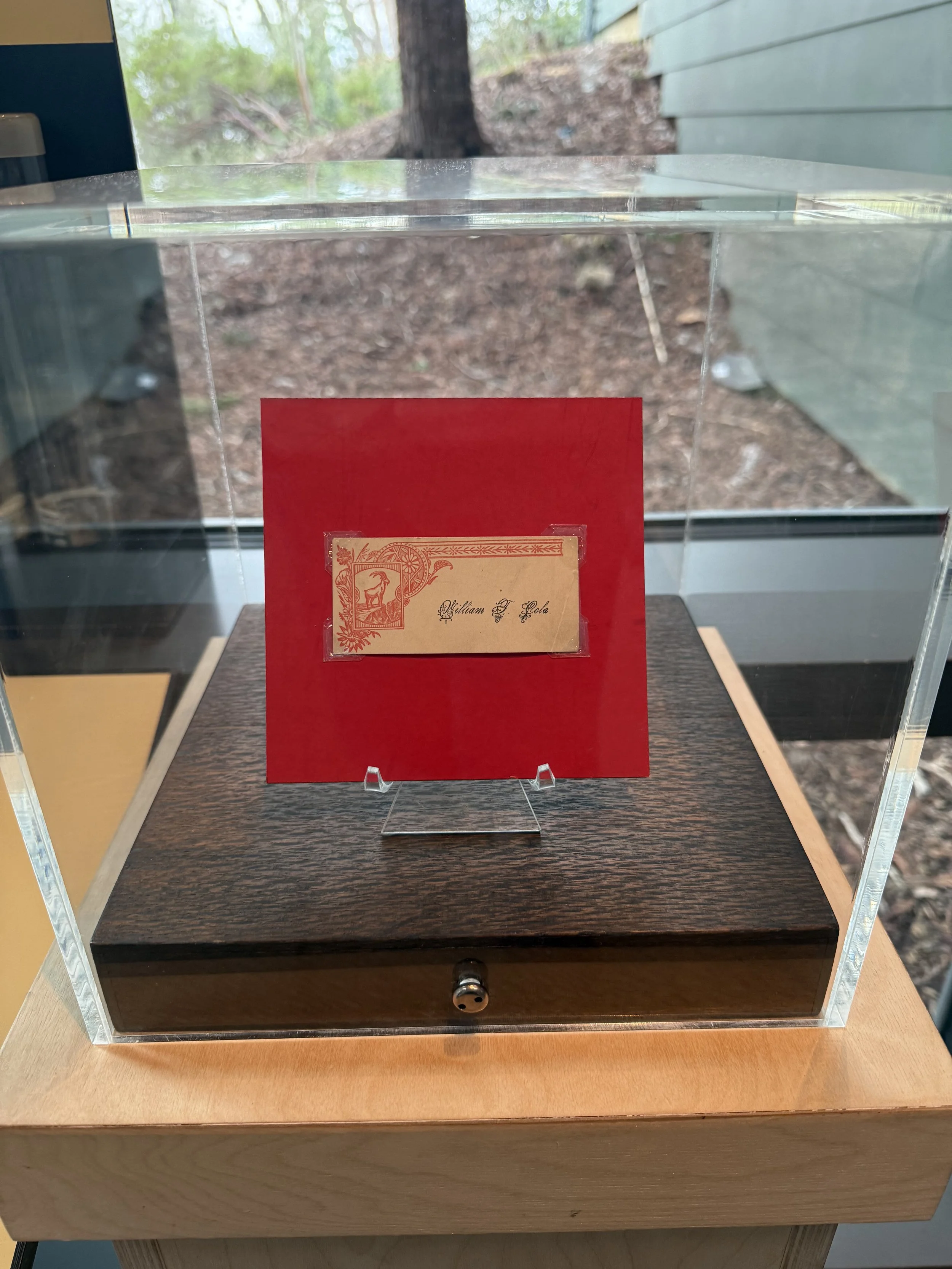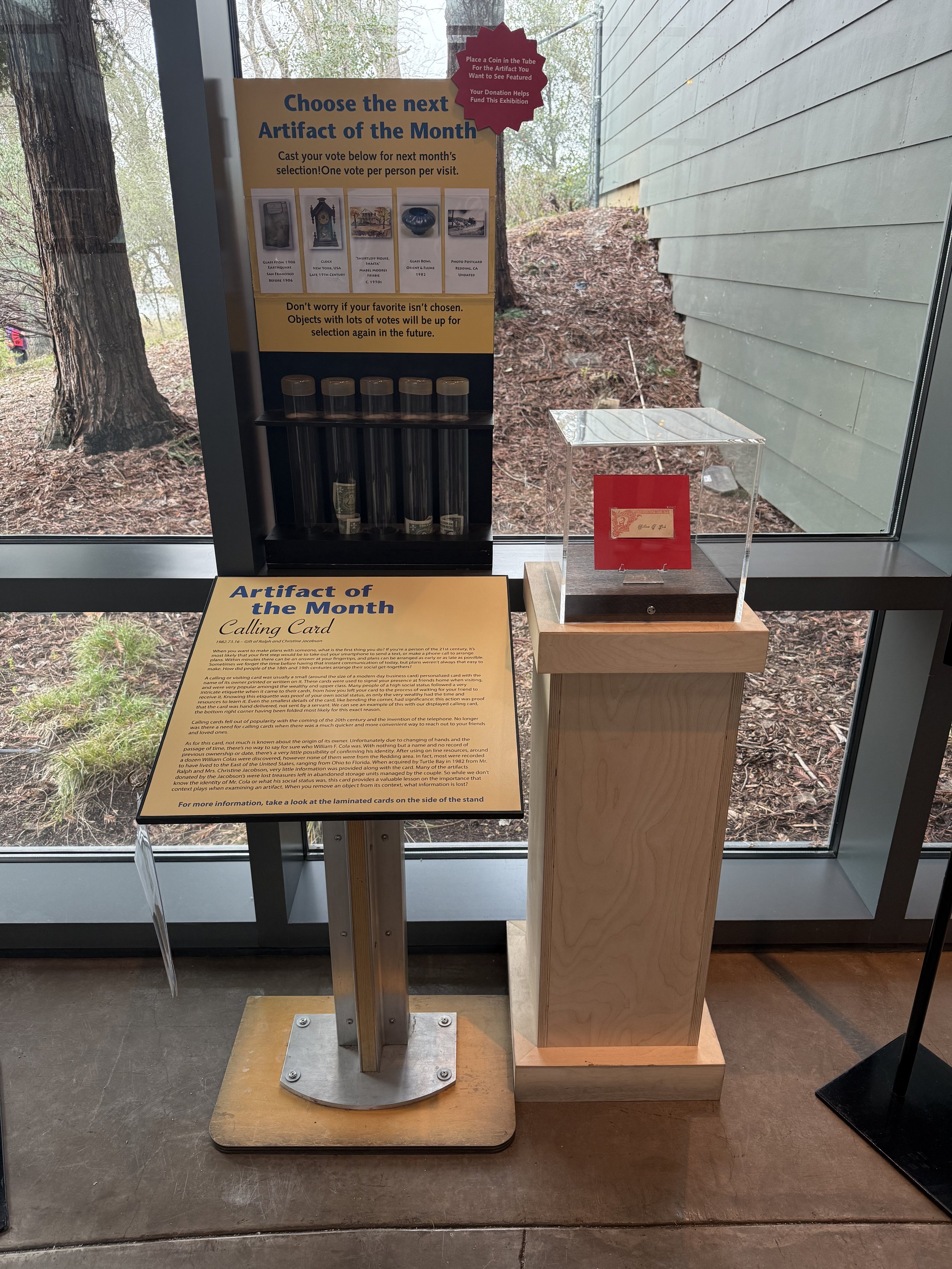Artifact of the Month - Calling Card
1982.73.16-Gift of Ralph & Christine Jacobson
Guest Curated by Collections Volunteer, Aja Selk
1982.73.16 - Calling Card
When you want to make plans with someone, what is the first thing you do? If you’re a person of the 21st century, it’s most likely that your first step would be to take out your smartphone to send a text, or make a phone call to arrange plans. Within minutes there can be an answer at your fingertips, and plans can be arranged as early or as late as possible. Sometimes we forget the time before having that instant communication of today, but plans weren’t always that easy to make. How did people of the 18th and 19th centuries arrange their social get-togethers?
A calling or visiting card was usually a small (around the size of a modern day business card) personalized card with the name of its owner printed or written on it. These cards were used to signal your presence at friends home when visiting, and were very popular amongst the wealthy and upper class. Many people of a high social status followed a very intricate etiquette when it came to their cards, from how you left your card to the process of waiting for your friend to receive it. Knowing this etiquette was proof of your own social status, as only the very wealthy had the time and resources to learn it. Even the smallest details of the card, like bending the corner, had significance: this action was proof that the card was hand delivered, not sent by a servant. We can see an example of this with our displayed calling card, the bottom right corner having been folded most likely for this exact reason.
Artifact of the Month in the Museum Lobby
Calling cards fell out of popularity with the coming of the 20th century and the invention of the telephone. No longer was there a need for calling cards when there was a much quicker and more convenient way to reach out to your friends and loved ones.
As for this card, not much is known about the origin of its owner. Unfortunately due to changing of hands and the passage of time, there’s no way to say for sure who William F. Cola was. With nothing but a name and no record of previous ownership or date, there’s a very little possibility of confirming his identity. After using online resources, around a dozen William Colas were discovered, however none of them were from the Redding area. In fact, most were recorded to have lived to the East of the United States, ranging from Ohio to Florida. When acquired by Turtle Bay in 1982 from Mr. Ralph and Mrs. Christine Jacobson, very little information was provided along with the card. Many of the artifacts donated by the Jacobson’s were lost treasures left in abandoned storage units managed by the couple. So while we don’t know the identity of Mr. Cola or what his social status was, this card provides a valuable lesson on the importance that context plays when examining an artifact. When you remove an object from its context, what information is lost?
Aja Selk, Collections Volunteer



